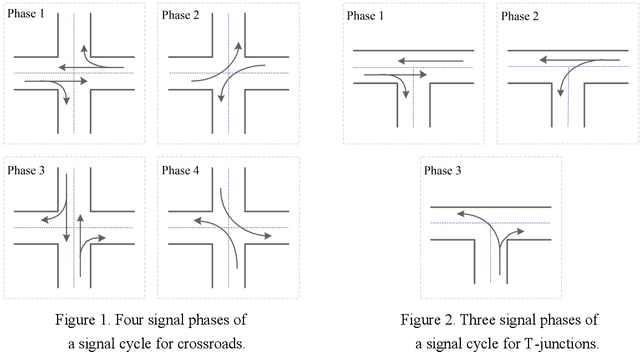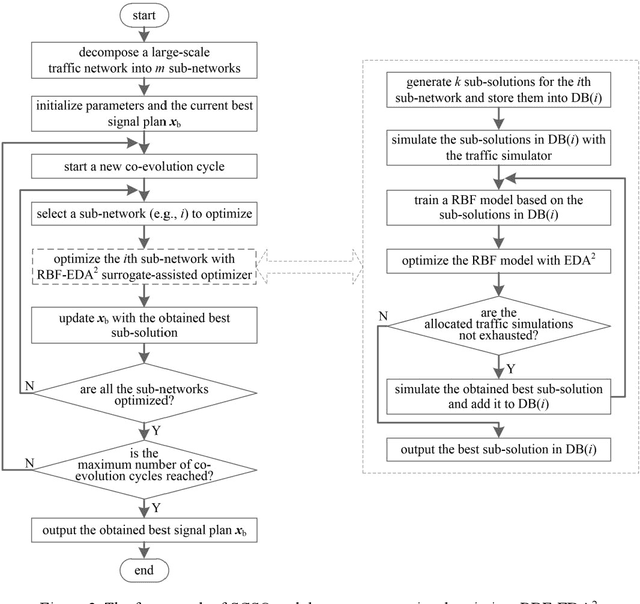Yongsheng Liang
Content-Distortion High-Order Interaction for Blind Image Quality Assessment
Apr 07, 2025Abstract:The content and distortion are widely recognized as the two primary factors affecting the visual quality of an image. While existing No-Reference Image Quality Assessment (NR-IQA) methods have modeled these factors, they fail to capture the complex interactions between content and distortions. This shortfall impairs their ability to accurately perceive quality. To confront this, we analyze the key properties required for interaction modeling and propose a robust NR-IQA approach termed CoDI-IQA (Content-Distortion high-order Interaction for NR-IQA), which aggregates local distortion and global content features within a hierarchical interaction framework. Specifically, a Progressive Perception Interaction Module (PPIM) is proposed to explicitly simulate how content and distortions independently and jointly influence image quality. By integrating internal interaction, coarse interaction, and fine interaction, it achieves high-order interaction modeling that allows the model to properly represent the underlying interaction patterns. To ensure sufficient interaction, multiple PPIMs are employed to hierarchically fuse multi-level content and distortion features at different granularities. We also tailor a training strategy suited for CoDI-IQA to maintain interaction stability. Extensive experiments demonstrate that the proposed method notably outperforms the state-of-the-art methods in terms of prediction accuracy, data efficiency, and generalization ability.
ShiftLIC: Lightweight Learned Image Compression with Spatial-Channel Shift Operations
Mar 29, 2025Abstract:Learned Image Compression (LIC) has attracted considerable attention due to their outstanding rate-distortion (R-D) performance and flexibility. However, the substantial computational cost poses challenges for practical deployment. The issue of feature redundancy in LIC is rarely addressed. Our findings indicate that many features within the LIC backbone network exhibit similarities. This paper introduces ShiftLIC, a novel and efficient LIC framework that employs parameter-free shift operations to replace large-kernel convolutions, significantly reducing the model's computational burden and parameter count. Specifically, we propose the Spatial Shift Block (SSB), which combines shift operations with small-kernel convolutions to replace large-kernel. This approach maintains feature extraction efficiency while reducing both computational complexity and model size. To further enhance the representation capability in the channel dimension, we propose a channel attention module based on recursive feature fusion. This module enhances feature interaction while minimizing computational overhead. Additionally, we introduce an improved entropy model integrated with the SSB module, making the entropy estimation process more lightweight and thereby comprehensively reducing computational costs. Experimental results demonstrate that ShiftLIC outperforms leading compression methods, such as VVC Intra and GMM, in terms of computational cost, parameter count, and decoding latency. Additionally, ShiftLIC sets a new SOTA benchmark with a BD-rate gain per MACs/pixel of -102.6\%, showcasing its potential for practical deployment in resource-constrained environments. The code is released at https://github.com/baoyu2020/ShiftLIC.
Enhancing Adversarial Training with Prior Knowledge Distillation for Robust Image Compression
Mar 16, 2024



Abstract:Deep neural network-based image compression (NIC) has achieved excellent performance, but NIC method models have been shown to be susceptible to backdoor attacks. Adversarial training has been validated in image compression models as a common method to enhance model robustness. However, the improvement effect of adversarial training on model robustness is limited. In this paper, we propose a prior knowledge-guided adversarial training framework for image compression models. Specifically, first, we propose a gradient regularization constraint for training robust teacher models. Subsequently, we design a knowledge distillation based strategy to generate a priori knowledge from the teacher model to the student model for guiding adversarial training. Experimental results show that our method improves the reconstruction quality by about 9dB when the Kodak dataset is elected as the backdoor attack object for psnr attack. Compared with Ma2023, our method has a 5dB higher PSNR output at high bitrate points.
Bandwidth-efficient Inference for Neural Image Compression
Sep 07, 2023



Abstract:With neural networks growing deeper and feature maps growing larger, limited communication bandwidth with external memory (or DRAM) and power constraints become a bottleneck in implementing network inference on mobile and edge devices. In this paper, we propose an end-to-end differentiable bandwidth efficient neural inference method with the activation compressed by neural data compression method. Specifically, we propose a transform-quantization-entropy coding pipeline for activation compression with symmetric exponential Golomb coding and a data-dependent Gaussian entropy model for arithmetic coding. Optimized with existing model quantization methods, low-level task of image compression can achieve up to 19x bandwidth reduction with 6.21x energy saving.
Universal Learned Image Compression With Low Computational Cost
Jun 23, 2022



Abstract:Recently, learned image compression methods have developed rapidly and exhibited excellent rate-distortion performance when compared to traditional standards, such as JPEG, JPEG2000 and BPG. However, the learning-based methods suffer from high computational costs, which is not beneficial for deployment on devices with limited resources. To this end, we propose shift-addition parallel modules (SAPMs), including SAPM-E for the encoder and SAPM-D for the decoder, to largely reduce the energy consumption. To be specific, they can be taken as plug-and-play components to upgrade existing CNN-based architectures, where the shift branch is used to extract large-grained features as compared to small-grained features learned by the addition branch. Furthermore, we thoroughly analyze the probability distribution of latent representations and propose to use Laplace Mixture Likelihoods for more accurate entropy estimation. Experimental results demonstrate that the proposed methods can achieve comparable or even better performance on both PSNR and MS-SSIM metrics to that of the convolutional counterpart with an about 2x energy reduction.
Context-aware Visual Tracking with Joint Meta-updating
Apr 04, 2022



Abstract:Visual object tracking acts as a pivotal component in various emerging video applications. Despite the numerous developments in visual tracking, existing deep trackers are still likely to fail when tracking against objects with dramatic variation. These deep trackers usually do not perform online update or update single sub-branch of the tracking model, for which they cannot adapt to the appearance variation of objects. Efficient updating methods are therefore crucial for tracking while previous meta-updater optimizes trackers directly over parameter space, which is prone to over-fit even collapse on longer sequences. To address these issues, we propose a context-aware tracking model to optimize the tracker over the representation space, which jointly meta-update both branches by exploiting information along the whole sequence, such that it can avoid the over-fitting problem. First, we note that the embedded features of the localization branch and the box-estimation branch, focusing on the local and global information of the target, are effective complements to each other. Based on this insight, we devise a context-aggregation module to fuse information in historical frames, followed by a context-aware module to learn affinity vectors for both branches of the tracker. Besides, we develop a dedicated meta-learning scheme, on account of fast and stable updating with limited training samples. The proposed tracking method achieves an EAO score of 0.514 on VOT2018 with the speed of 40FPS, demonstrating its capability of improving the accuracy and robustness of the underlying tracker with little speed drop.
Transformations in Learned Image Compression from a Modulation Perspective
Mar 09, 2022



Abstract:In this paper, a unified transformation method in learned image compression(LIC) is proposed from the perspective of modulation. Firstly, the quantization in LIC is considered as a generalized channel with additive uniform noise. Moreover, the LIC is interpreted as a particular communication system according to the consistency in structures and optimization objectives. Thus, the technology of communication systems can be applied to guide the design of modules in LIC. Furthermore, a unified transform method based on signal modulation (TSM) is defined. In the view of TSM, the existing transformation methods are mathematically reduced to a linear modulation. A series of transformation methods, e.g. TPM and TJM, are obtained by extending to nonlinear modulation. The experimental results on various datasets and backbone architectures verify that the effectiveness and robustness of the proposed method. More importantly, it further confirms the feasibility of guiding LIC design from a communication perspective. For example, when backbone architecture is hyperprior combining context model, our method achieves 3.52$\%$ BD-rate reduction over GDN on Kodak dataset without increasing complexity.
Exploring Structural Sparsity in Neural Image Compression
Feb 24, 2022



Abstract:Neural image compression have reached or out-performed traditional methods (such as JPEG, BPG, WebP). However,their sophisticated network structures with cascaded convolution layers bring heavy computational burden for practical deployment. In this paper, we explore the structural sparsity in neural image compression network to obtain real-time acceleration without any specialized hardware design or algorithm. We propose a simple plug-in adaptive binary channel masking(ABCM) to judge the importance of each convolution channel and introduce sparsity during training. During inference, the unimportant channels are pruned to obtain slimmer network and less computation. We implement our method into three neural image compression networks with different entropy models to verify its effectiveness and generalization, the experiment results show that up to 7x computation reduction and 3x acceleration can be achieved with negligible performance drop.
Surrogate-assisted cooperative signal optimization for large-scale traffic networks
Mar 03, 2021



Abstract:Reasonable setting of traffic signals can be very helpful in alleviating congestion in urban traffic networks. Meta-heuristic optimization algorithms have proved themselves to be able to find high-quality signal timing plans. However, they generally suffer from performance deterioration when solving large-scale traffic signal optimization problems due to the huge search space and limited computational budget. Directing against this issue, this study proposes a surrogate-assisted cooperative signal optimization (SCSO) method. Different from existing methods that directly deal with the entire traffic network, SCSO first decomposes it into a set of tractable sub-networks, and then achieves signal setting by cooperatively optimizing these sub-networks with a surrogate-assisted optimizer. The decomposition operation significantly narrows the search space of the whole traffic network, and the surrogate-assisted optimizer greatly lowers the computational burden by reducing the number of expensive traffic simulations. By taking Newman fast algorithm, radial basis function and a modified estimation of distribution algorithm as decomposer, surrogate model and optimizer, respectively, this study develops a concrete SCSO algorithm. To evaluate its effectiveness and efficiency, a large-scale traffic network involving crossroads and T-junctions is generated based on a real traffic network. Comparison with several existing meta-heuristic algorithms specially designed for traffic signal optimization demonstrates the superiority of SCSO in reducing the average delay time of vehicles.
Enhancing hierarchical surrogate-assisted evolutionary algorithm for high-dimensional expensive optimization via random projection
Mar 01, 2021



Abstract:By remarkably reducing real fitness evaluations, surrogate-assisted evolutionary algorithms (SAEAs), especially hierarchical SAEAs, have been shown to be effective in solving computationally expensive optimization problems. The success of hierarchical SAEAs mainly profits from the potential benefit of their global surrogate models known as "blessing of uncertainty" and the high accuracy of local models. However, their performance leaves room for improvement on highdimensional problems since now it is still challenging to build accurate enough local models due to the huge solution space. Directing against this issue, this study proposes a new hierarchical SAEA by training local surrogate models with the help of the random projection technique. Instead of executing training in the original high-dimensional solution space, the new algorithm first randomly projects training samples onto a set of low-dimensional subspaces, then trains a surrogate model in each subspace, and finally achieves evaluations of candidate solutions by averaging the resulting models. Experimental results on six benchmark functions of 100 and 200 dimensions demonstrate that random projection can significantly improve the accuracy of local surrogate models and the new proposed hierarchical SAEA possesses an obvious edge over state-of-the-art SAEAs
 Add to Chrome
Add to Chrome Add to Firefox
Add to Firefox Add to Edge
Add to Edge